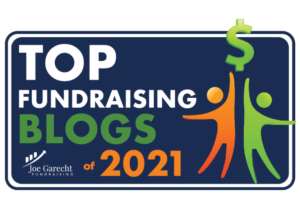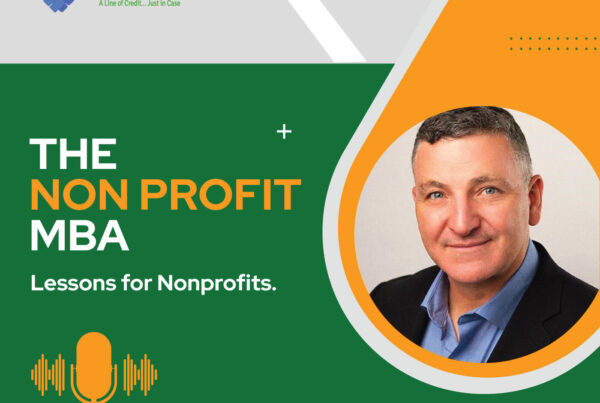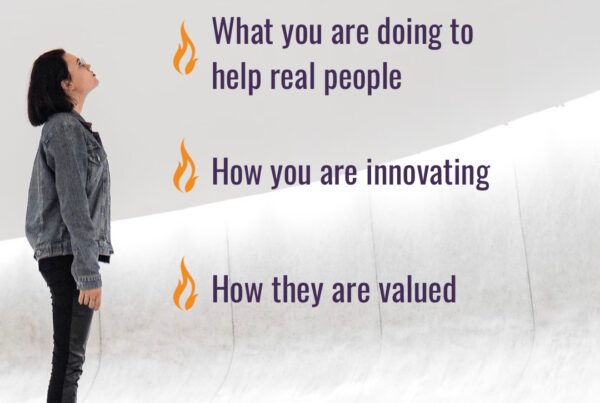I work with many organizations that regularly hold informational tours at their offices or program sites. These sometimes have fun names like, “Art Rocks” or “More than Meets the Eye.” They are sometimes called a Point of Entry™ event or an information session or they may be a hard hat tour for a capital campaign or a site visit for a pending grant proposal.

Whatever they are called their intention is to knock the socks off of the guests and cause them to connect deeply with the mission and the organization. In my experience that happens so rarely that I decided to create this checklist to help guide well-intentioned planners through the process of conducting these tours or what I call an “experience our mission” session.
- Personally invite people via phone or face to face.
- Make sure to share with them that space is limited and their “spot” has been held but if plans change to let you know.
- Share some startling, eye-opening statistic in your email reminder sent a day or so before.
Example: 1 in 9 students in our school district are homeless and will sleep in a car or a shelter tonight. Your visit with us tomorrow will move and inspire you about what YOU and our community can do to shrink that number. - From the moment the person comes through your doors, captivate them with interesting visual displays, photos, eye-opening information and poignant, real-life stories.
Example: At the Students Today Leaders Forever Under the Hood monthly events they transform their conference room into the inside of a bus with sets of pairs of chairs and an aisle down the middle. The program begins with video footage on the wall behind the greeter showing us the route we would see if we really were in a bus. . . the view from the windshield as the bus heads out of town on a Pay it Forward tour.Guests are taken through a couple of the very same exercises the youth are asked to participate in. We experience feeling nervous, excited, proud, and finally finish the tour after 45 minutes of fun interspersed with questions that cause us to ponder combined with a few short “get to know you chats” with our seatmate.
While we never leave the room we have experienced through the stories shared by student leaders, staff, and other volunteers all that a young person or their parent might feel by participating in this powerful program for students to conduct service projects over a weekend or a weeklong trip.
- Within the first four minutes of the tour/experience cause your guests to feel something powerful about your clients, your waiting list, or the need for your services.
- Make sure at least three real-life stories are shared about people you serve. The best way to share stories is to have a client tell their own story.
- Share the “funding gap” at least twice throughout the visit.
NOTE: I define funding gap as the total expenses for running the agency minus any funds received to date (grants received, United Way, fees for service, individual donor contributions, etc.). - Blend the sharing of the funding gap with a real life story of one person whose life is different because of your work. Make the hearing of financial information interesting by connecting it to a real-live person.
- If we actually move around the agency or building share in multiple ways what you could do more of if you had more resources by talking about what is missing.
- Do NOT ask for money.
- Do share how much it costs to help or save one person and share if you have a waiting list in specific programs.
- Make sure your guests are talking at least 40% of the time. Ask them questions, cause them to engage with each other. If you or your staff are doing all the talking there is not a deep, meaningful connection being created.
- At least three times during the visit cause me to hear things and learn things that surprise me and/or make me feel uncomfortable.
Example: Andrea, the headmaster at a school for children with learning disabilities hands out a small sheet of paper and asks guests to fill in their contact information. Unfortunately the words are all scrambled and no one can read the paper. She pushes us to hurry, to finish filling in the sheet, and we start to feel uncomfortable. Just when we are really wondering if we want to be here, Andrea stops and pauses and lets us know that is how their students feel at other schools. But not at this one. The relief we all feel is palpable and we are deeply engaged in listening to the rest of the information and readily share how uncomfortable we felt when asked.
After this is all completed and we are sent on our way, be sure to make a follow-up thank you call to the single visitor or to everyone in the whole group to find out what they thought and get their feedback about what they experienced.
I promise you, if you remember to create “an experience” rather than a tour, you will cause your visitors to feel more and become more deeply involved with your organization.






